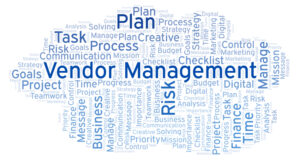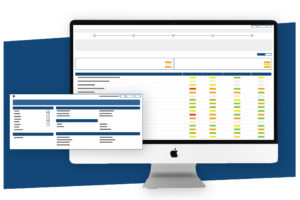How to Efficiently Build Your Vendor Inventory
Author: Lisa Spampinato
Whether you’re creating a new vendor management program or improving an existing one, the first step involves building a comprehensive vendor inventory. If this seems daunting, you are not alone!

This process can be a challenge for many of the clients I work with. The most common roadblocks are:
- The lack of centralization of the information, and
- Confusion about which vendors to risk assess, track contracts for, and perform due diligence on.
Remember, not all vendors are created equal. Your organization may have dealt with many vendors over the years, and the overall number may be intimidating. Stop spinning your wheels trying to figure out where to start. Instead, follow the steps below to build a comprehensive and manageable vendor inventory:
1. Build a list of vendors your company has paid over the last two years
Your Accounts Payable department should have a list that you can use to get started. Also, don’t assume that you’ll need to track every vendor in the AP system. If you do that, you will spend a lot of time on insignificant vendor relationships.
2. Review the list and eliminate vendors you don’t have an ongoing relationship with
There will be the obvious ones, such as the restaurant you took your team to or the contractor that installed new lighting in your office.
3. Look at vendors that are very insignificant to your organization
These might include:
- Charities,
- Periodical subscriptions,
- Florists, and
- Websites you use to purchase items.
Sure, you may use their products and services regularly. But they don’t pose a risk to your organization. As a result, you can safely eliminate them from your inventory.
4. Don’t eliminate key vendors
At this point, you may have a good list to work with. However, many organizations immediately think of all the vendors that provide software. These vendors are only one piece of the total inventory. Ensure you didn’t eliminate vendors like:
- Your cleaning company,
- Contractors that enter your facility,
- Managed services providers,
- Attorneys,
- Telecom providers, and
- Utilities.
5. Vendor stratification
Now, you probably have a pretty good inventory of vendors. Next, you can start to stratify them to help you concentrate on the vendors that need the most attention.
Vendor Stratification and Risk
Vendor Categorization, or stratification, should be based on the criticality to your organization. I typically see vendors put into different buckets or tiers of criticality. Start by defining what makes a vendor critical, important, not important, insignificant, etc. For example, at Wolf, we define our critical vendors as those that:
- Cannot easily be replaced and/or
- Whose services, if interrupted, would cause significant financial and/or operational impact to the company.
Your definition may vary, but it’s important to set those guidelines before stratification and ensure all those who have vendor relationships in your organization are aware. After you tag your vendors based on criticality, you can start thinking about the risk. Vendors should be risk assessed to determine:
- The inherent risk (risk with no controls in place), and
- Residual risk (risk after controls are considered).
It is very important not to confuse criticality with risk. A vendor can have a high inherent risk, such as a company that shreds sensitive documents, but they are not critical to your operations, as you can replace them very easily.
Centralization and Tracking

Ideally, you should track your vendors in a software package, not Excel spreadsheets. Vendor management software allows multiple users to:
- Maintain vendor information,
- Assign tasks to an owner,
- Send notifications, and
- Provide reporting.
This software should also allow you to risk assess your vendors, track key contract dates, and set up tasks for due diligence reviews on your vendors.
Vendor Inventory Next Steps
Are you ready to build your vendor inventory and need some help? If so, let’s talk!
WolfPAC has a world-class third-party risk management offering that includes software and custom consulting services designed to help our customers effectively manage and track their vendors.
Contact us today for a demo and overview of services.